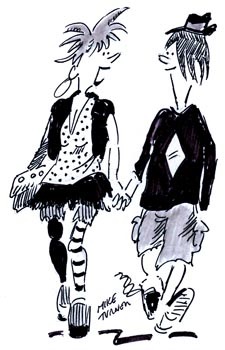In New York, I head for Citarella on Broadway only to be confronted by a noisy demo at the entrance. (Among New York foodies, Citarella is to Whole Foods what in London Waitrose is to Tesco.) People in straw sandals and peasant dresses are handing out leaflets proclaiming ‘Say no to foie gras!’ Citarella is probably one of the few places in the world which sells foie gras in volume, so this is a strike, as it were, at the very heart of the evil empire.
Foie gras is goose liver swelled up by force-feeding just before the bird is killed; the liver, lightly sautéed or made into a terrine, is at first faintly bitter on the tongue then faintly sweet, always unctuous and smooth, and light — if properly prepared, light as foam. My impulse throughout life has therefore been to say ‘yes!’ to foie gras whenever I can afford it, but the protesters were so well mannered, and some so beautiful, that I stopped to chat.
Foie gras is indeed the sadist’s food of choice. A metal tube is rammed down the goose’s gullet to overfeed it, the air-sacs of the lungs are correspondingly compressed so that the goose is constantly struggling for breath; confined narrowly in cages, the birds become filthy and so are prey to all manner of disease. As a final insult they are de-billed, a painful procedure which disarms and disables the creature for the rest of its miserable life.
The French — wouldn’t you know? — are principally responsible for this abuse, producing and consuming most of the world’s foie gras, but the idea for treating birds this way originated among the ancient Egyptians. Our forefathers on the Nile noticed that geese naturally overate before beginning their long annual migrations, and found both the flesh and innards of these fuelled-up birds to be particularly delicious.







Comments
Join the debate for just £1 a month
Be part of the conversation with other Spectator readers by getting your first three months for £3.
UNLOCK ACCESS Just £1 a monthAlready a subscriber? Log in